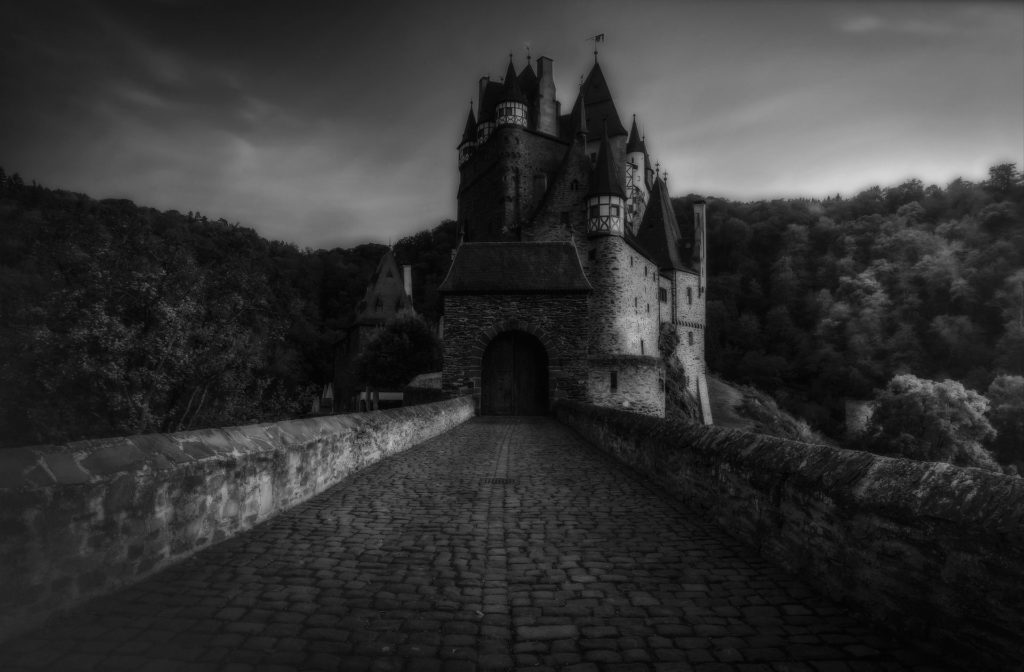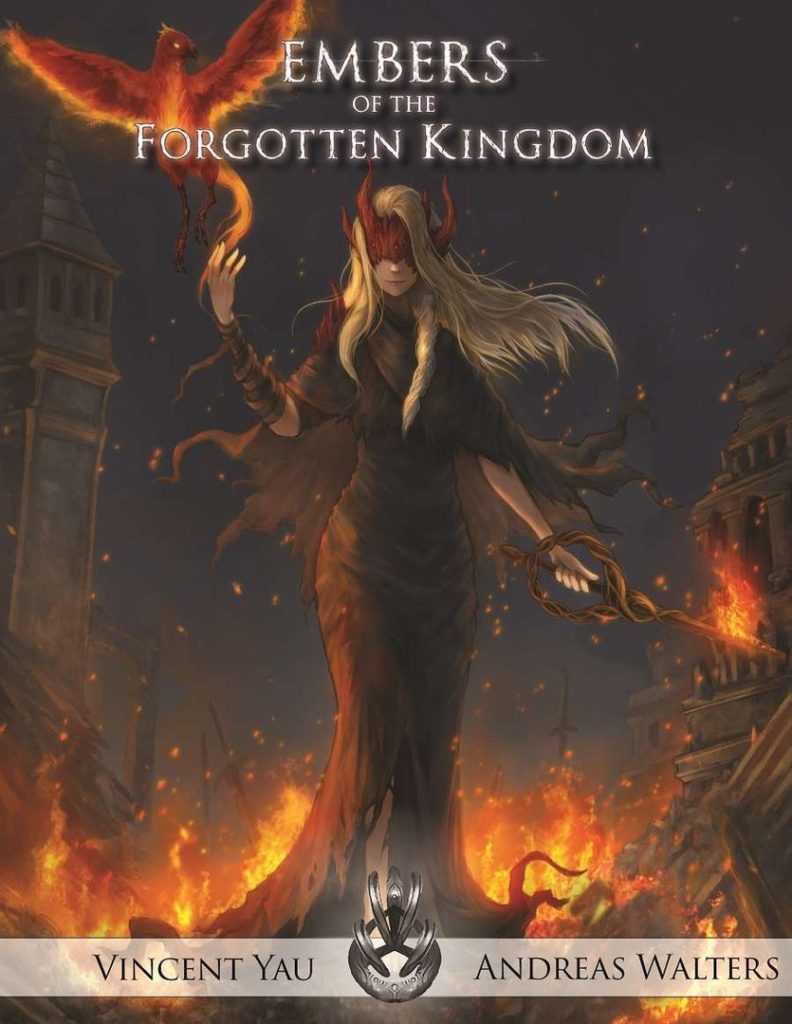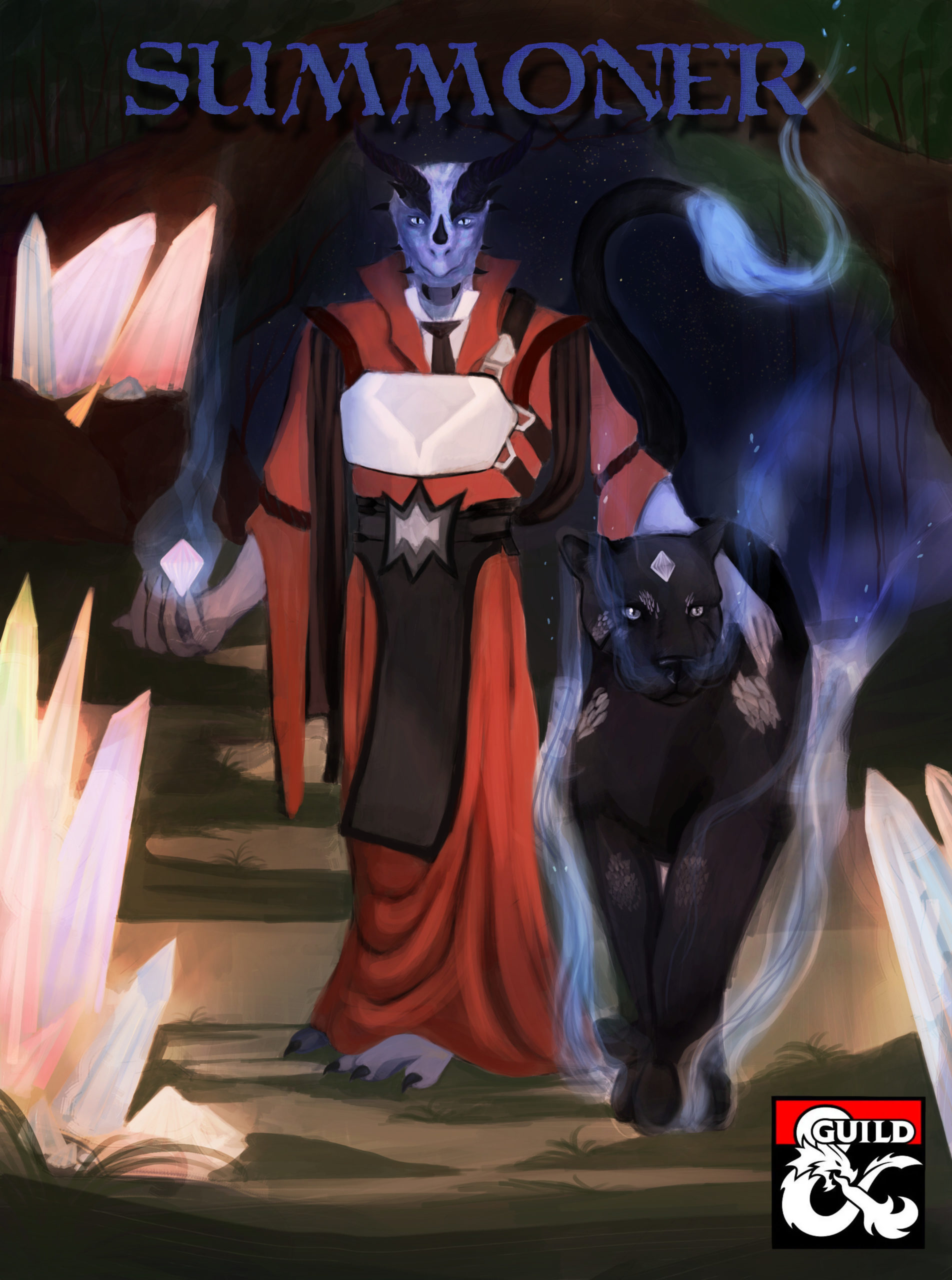A Soulsborne Setting explained with Embers of the Forgotten Kingdom

This post contains affiliate links, which are marked with a “*” in the name.
Title image and uncredited images are from Pixabay.
After the Dark Souls RPG has been the talk of the town for the past few weeks, and even before that the voices were raised as to whether such a setting and game should be implemented with the core rules of Dungeons and Dragons 5e, it’s time we dedicated ourselves to Embers.
Embers of the Forgotten Kingdom is not a Dark Souls inspired roleplaying game like Runecairn, the Dark Souls Pen and Paper by Steamforge or even the Japanese Dark Souls roleplaying game is. There are many spin-offs that try to take the core of Dark Souls and implement it on the tabletop. Embers of the Forgotten Kingdom cares more about the atmosphere and the world. It is a system neutral setting that also explains what defines a Soulsborne setting and was born by people inspired by Dark Souls.
This post started out as a review of the work itself, but evolved along the way into a "What makes a Soulsborne setting and how does it present itself at the table?" Post. In talking with a few people and also starting our Embers campaign, I think the first 15 pages of the work already do a good job of laying out why the book is written the way it is and how these thoughts draw on Dark Souls as a foundation and inspiration. The following is a presentation of those points and a correlation with Ember’s.
The Book
Short Version of Embers of the Forgotten Kingdoms
Embers of the Forgotten Kingdom is about a kingdom that is subject to the summer curse. Summer does not end and the cycle is broken. During the summer, the summer king reigns for about a lifetime. After that he awakens the winter queen in the fall, who awakens from her sleep and takes over the regency in the winter. During spring the next king is accepted by the ritual flames and is reborn in that fire.
Due to various successive situations caused by ill will and tragedy, the queen was not awakened from her sleep and thus the summer does not end. All those who die are reborn and torn from their natural cycle. The souls thus do not flow back into the world between the realm of the living and the dead and disintegrate with each successive death until only the loose shell of the former person remains.
- Publisher: Metal Weave Games
- Release Year: 2018
- Language: English
- Pages: 135
- Format: PDF / Print
- Price: 19,99 $ for the PDF (also available at DriveThruRPG*) / 34,99 $ for the Hardcover + PDF or 44,95 $ for the leatherbound Book + PDF at Metal Weave Games
What defines a Soulsborne setting?
Adapting a video game is an exciting endeavor. Some mechanics make sense on computers and consoles, but not in a tabletop role-playing game.
"What kind of motivation might my character have in Embers?"
"How do we deal with deaths and do fights become tough as hell so we need multiple approaches or do we need to prepare a lot before entering a fight?"
These are questions that my players asked me. Embers of the Forgotten Kingdom brings as a definition of Soulsborne games the frequently mentioned aspects:
- Combat sequences that must be learned, and stamina management
- Unknown and obscure lore
- XP loss upon death
- Difficulty, which is often defined by combat
Another consideration is that the world is on the brink of doom. However, this doom affects individuality, society, and faith.
Individual: The world stopped and the individuals fight against it. In the process, they die and bit by bit loose the reason for their resistance and fall into a madness.
Society: Most civilizations and cities have crumbled. All those who had rank and name remain in their duty, trying to maintain a status quo that no longer exists.
Faith: Gods created the world and kingdoms, but since the curse, they too have disappeared. With that, faith in them also dwindled and only a few loyal individuals remain in their service.
Finally, Embers tells us that in Japanese mythology, quests are created to restore the status quo. In doing so, the hero embarks on a path that can also mean sacrificing themselves in order to restore the original state. The original state does not have to be good. It is only a matter of restoring it.
How does this transfer at the table?
Do we need boss souls now? Do we need +5 weapons and slot-based spells and miracles? What are the invasion mechanics? Can players from another table invade my game session and attack me?
Embers emphasizes that the tone and mood of a video game is not tied to the implementation of all the mechanics of the game. Usually, just a few core aspects are enough to get the feel of a setting across. Therefore, Embers of the Forgotten Kingdom limits itself to a few aspects that can be found throughout the Soulsborne games.
Discoveries along the Way
At the beginning, everything is very unknown and the players are thrown into this unknown. How the backstory is woven and why it came to this state that now exists must be discovered. In this process, it is essential that exploration journeys are made to different regions and places of the world, since talking to individual characters does not reveal the entire truth.
In Embers, this is described through the places and characters. It requires some ideas on how to present this information in the cryptic style of Dark Souls. However, the template of what these places and characters mean in the world and contribute to the overall picture of the Summer Curse is well woven together and offers different approaches to exploring the world and revealing the story.
Gigantic Gothic Architecture
The characters of a Soulsborne world live in a ruinous country and are on the edge of their mental health. They hold on to individual ideals and goals. Architecture is no exception. The main Dark Souls series has a ruined, romantic medieval kingdom with huge gothic castles, towers and cathedrals. The buildings are their own dungeons and thus explorable, and contain knowledge about the time before Embers.
In Embers, Marowlyth Abbey, the royal mausoleum and Yúla as a city in front of Ember Castle and the castle itself stand out here and strike exactly in this notch. Not only are they regions of their own, with sub-locations like the Garrison of the Dead and the Poisoned Port, but they also weave the image of vast and decaying structures before the mind’s eye.

Storytelling via Objects
In Soulsborne games, the story of the world is not told in a straight line, but must be assembled along the way. In the truest sense of the word, objects also tell the background story of the world. These objects must be well looked at, inspected and also attached to each other in order to bring to light new information about the world, groupings and structures of the kingdom.
Embers of the Forgotten Kingdom emphasizes this, and each chapter begins with a new object that briefly offers insight into its connection to the kingdom. However, there is a lack of an overview of various items that provide a brief fluff text. While this would have been a nice addition, this is where the game master must take action and include the items themselves, which then provides more information about the land and plot. One example is the Cradle of Thorns.
Cradle of Thorns
A constantly writhing flower of animated wood and thorns, beset in its heart is a glowing orb. Some sorcerers recognize this as Aderyn pearl, a focus for dark sorceries and blasphemous bindings.
Death and Difficulty
The difficulty of the Soulsborne games exists in the combat system. However, Embers does not recommend making this a core element at the table, as it translates heavily into the game, depending on the system.
Combat situations are expected to be difficult and perhaps punishing, but whether death has to be the punishment depends a lot on how entertaining the people at the table find this.
Ahead of time: Embers was originally conceived as a Book of Bosses and then took another turn away from that concept. However, the supplemental volume for Shadows of the Demon Lord still shows monster values for the core characters of the setting, which should be given to the game master from the start: The players should know that this is a person who will lead to death and ruin if they are confronted directly.
Experience as Currency
Souls in Dark Souls games are both a currency and experience points. To pick up the feel of this, the main currency of the game system can quickly be changed to experience points. Originally, this was also the case in Dungeons and Dragons, and many OSR games still adapt this idea. Experience points are awarded there for treasures found and gold brought to safety. But in the same way, losing them, for example through death, can cause you to lose experience points as long as they have not yet been spent.
Since Embers of the Forgotten Kingdom describes the setting via characters and locations, and thus follows the video games mentally as well as being system neutral, no information is provided on values of items and treasures as well as souls for slain enemies. I don’t own the supplemental volume for Dungeons and Dragons, but at least the experience points of enemies could be applied there. Whether this implementation of currency and mechanics fits the game system must also be decided on a case-by-case basis. For our Shadow of the Demon Lord round, for example, we will refrain from doing so.
Increasing Madness
The circumstance of the world and its standstill is reflected on the spiritual state of the inhabitants of the country. This can also be a punishment at death or just fundamentally through the world. In some game systems, something like insanity or stress is represented as a game stat, and this is exactly what fits in well with the point of lost humanity, which Dark Souls in particular picks up on. Whether the world is oppressive enough to gnaw at the mind or situations in the world lead to it is then up to the game master to flesh out.
In Embers of the Forgotten Kingdom, the summer curse, the deaths and revivals of individuals, and the never-ending summer cause the inhabitants to lose themselves piece by piece.
The characters in Embers are portrayed very well in this aspect. There are rarely individuals who are wholly good or evil, but have often lost themselves along the way and therefore have traded their humanity for madness. This does not mean that they should or must be greeted with a club or axe to the face.
Bonfires
In the midst of this cruel and merciless world, there is a need for places to catch one’s breath, places of peace and safety. Embers recommends that there be such places that show the players: It’s safe here. You can relax, take a breath, and regroup.
Embers does not describe the sites in such detail that there are maps of the structures or regions. Therefore, there is also a lack of information about where these places of safety can be found. I also suspect that it is not necessary, since you can quickly decide when such a place should be reached.
Humanity
As the soul of the player characters and inhabitants of the world slowly breaks down, the humanity also splits off from the soul. These two parts, once together, thus result in two different aspects of a person. This can go so far that not every has a humanity anymore. At the same time, one can consume this humanity and thus restore a part of oneself. This can lead to strengthening one’s mental health or simply strengthening oneself fundamentally. Nevertheless, this way one attracts the attention of starving souls and beasts.
I suspect that due to system neutrality, it was avoided to elaborate on this. However, at our table, the point also arose directly, "What if we have items that restore humanity and thus counteract the corruption of the soul from shadows of the demon lord?" It can happen that quickly, and I suspect that as we design the round for the setting, anyone and everyone will come up with ideas of when and where to recover a piece of their own selves.
In our setting, deaths are punished by Corruption. Corruption is a game value in The Shadow of the Demon Lord that is increased in very specific situations (such as learning forbidden spells or murders) and can cause you to go from dying or passing out at 0 hit points to dying outright. It is a corruption of the soul. This results in players being rewarded with humanity for actions or overcoming obstacles that result in delaying or even averting their descent. At the same time, we don’t put much emphasis on a buck-heavy play style, but you know the drill. Deaths happen from time to time.
Outsiders
The kingdom and the world itself is unique. There is a world that takes place outside the kingdom. The Summer Curse has not yet reached those lands either. In the video game, people are summoned into the world. You can also use this approach in role-playing to introduce new characters. Whether they want to hunt souls, seek humanity, or recover other knowledge and treasures of the kingdom is completely open.
In Embers of the Forgotten Kingdom, the kingdom of Embers is described as a place of dark secrets, lost treasures and power, so even people from outside the kingdom go to this decayed realm and risk succumbing to the curse in order to achieve their goals.
What are the Player Characters doing here?
In talking with a friend, Elden Ring was praised for having better motivations for the characters. Compared to the first souls games, the movitavtion of characters in the world is more explained, making you understand why they do what they do.
The Dark Souls games otherwise explain quite little of each character’s motivations. The main character in particular is more of an avatar whose purpose is for a gamer in front of the screen to finish the game. However, in tabletop role-playing games, character motivations are an important factor for some people.
"If I didn’t grow up in Embers. Why would I go to this cursed land?"
In Dark Souls, you wake up at a shrine and off you go. In Curse of Strahd, as another example, the fog surrounds the party and you want to escape that place. It doesn’t always have to be the deep backstory that sets our character on the path.
In our tabletop round, the kingdom of Embers is set in Ravenloft as a domain of fear. Therefore it also offers the simple motivation that the characters have been summoned there and now want to escape their unwanted fate and flee that place again.

Suggested Motivations
Nevertheless, Embers is a setting for a tabletop role-playing game and therefore naturally has ideas for possible character motivations. The work describes Embers and the Summer Curse through character relationships and their backgrounds. Thus, the book automatically provides a character-driven plot that is strong enough for a campaign without describing a firmly written-out campaign.
But Embers is also open to all those who do not want to follow this story. Therefore, there are still motivations that can play alongside the Summer Curse or even after it:
- Survival: Similar to Curse of Strahd, the characters in Embers are stranded and must fight to survive.
- Escapes: Perhaps they have landed in this realm unintentionally and cannot easily leave.
- A Search for Answers: Embers is a place that holds and keeps buried some secrets. Perhaps the answer to a personal question or for your own homeland lies buried in this land? Or maybe you were born here and you are looking for the answer of how to help yourself.
- Help: Your character is pure of heart and wants to do the right thing and break the curse that lies on the land or find another way for the inhabitants to be released from their suffering.
- Treasures: Cities and castles have perished in the realm, but so have their riches. What did your character hear about and what does she covet?
- Power: Perhaps your motivation is selfish and you seek power to set yourself apart from others, or perhaps you have a powerful enemy to oppose or seek the power necessary to protect others.
- Revenge: Your nemesis fled to Embers and now you journey after that person to achieve the sweet and cold-blooded revenge you have long craved.
Conclusion
Embers of the Forgotten Kingdoms gives the impression of having thought about what it means to create a Soulsborne setting and apply it to tabletop role-playing games. Without introducing rules to overturn the beloved system to emulate a Dark Souls feel, ideas and approaches are described here that reuse the atmosphere of the game series.
The core elements mentioned are a world in a ruinous state in terms of individuals, society and faith. The loss of humanity of individual persons and the decay of madness accompany the personal downfall, while the unmaintained buildings and structures slowly collapse. Through individual people, places, and objects, the story is described cryptically and superficially obscuring the background of the world. The discovery of the story is thereby a core motivator to travel the individual locations of the world. But the symbolic resting places with their bonfires are also meant to serve as a breather and thus represent a safe haven.
It is stressed that there are elements of the series more optional. Those elements depend on the game system and view at the gaming table. This includes the death of characters and how this is handled and whether the game experience has to be hard and merciless. These points are not used to convey atmosphere. Using experience points as currency is also heavily dependent on the game system, but placed closer than deaths and punishing fights.
In the follow-up article, we’ll leave the first 15 pages of the book and turn our attention to the remaining pages of the 135-page work. The main focus will be on the structure, which is different from other setting books, as well as the structure of the individual sections.








